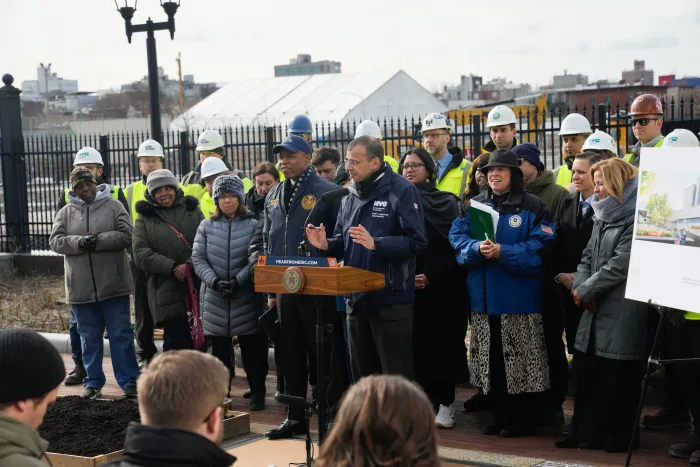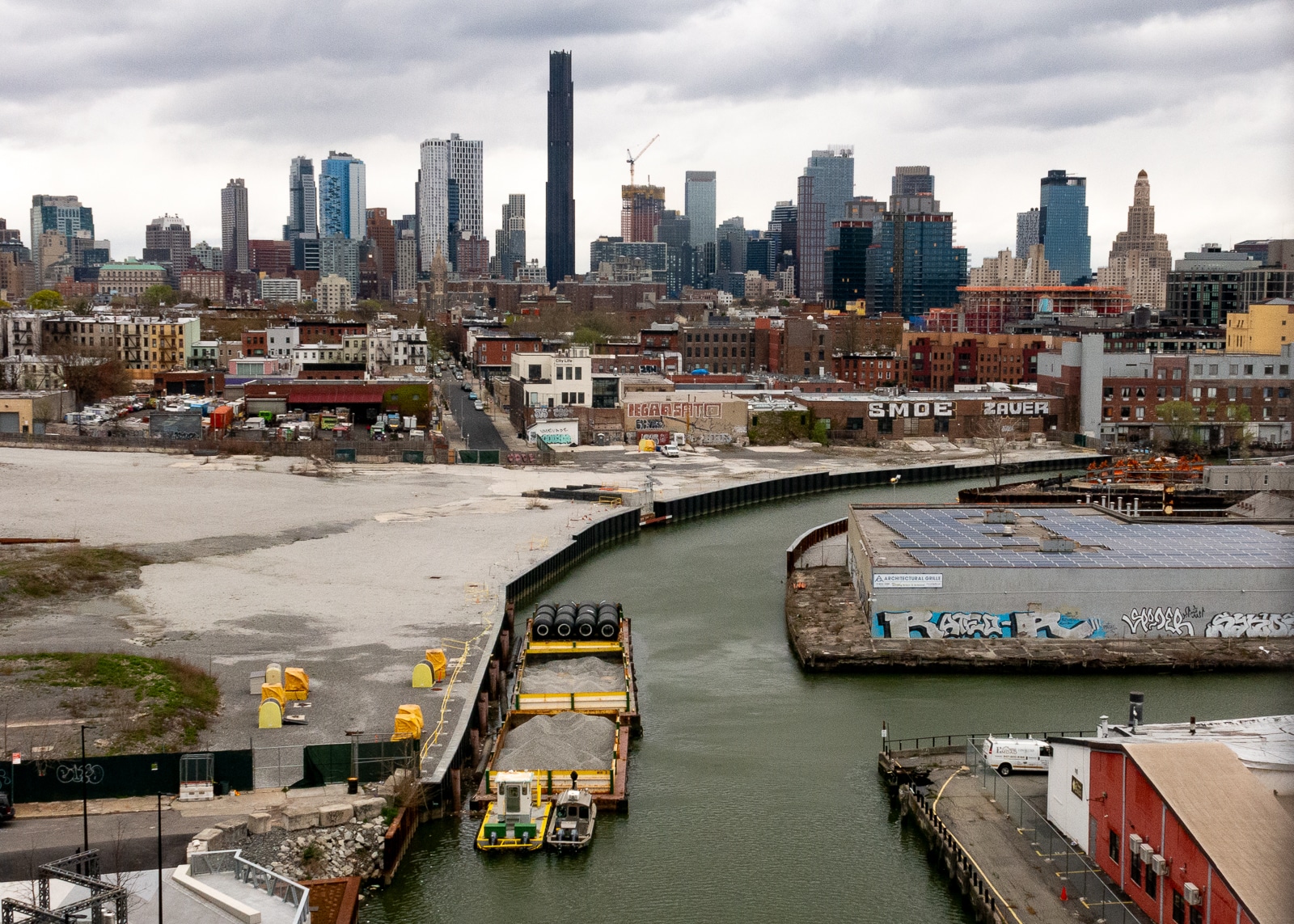Long-Delayed Gowanus Canal Overflow Tank Progresses With Excavation
The Red Hook tank is critical to the success of the Gowanus Canal Superfund cleanup and will prevent contamination of the canal during storms.

The city last week finished excavation at the future site of a long-delayed combined sewer overflow tank. Photo via NYC DEP
By Kirstyn Brendlen, Brooklyn Paper
A long-delayed project critical to the success of the Gowanus Canal Superfund cleanup reached an early milestone last week, as the city finished excavating space for a massive underground sewer overflow tank.
The Red Hook tank — formerly known as the Head End tank — will catch 8 million gallons of rainwater and combined sewer overflow during storms, preventing it from flowing right back into the freshly scrubbed canal.
Construction started on Red Hook and a second, smaller tank called Owls Head in March 2023. Last December, in response to myriad resident complaints about a foul odor emanating from the Red Hook construction site, DEP implemented an “expedited” construction schedule, and finished excavation six months ahead of schedule.

“The creativity and innovation to speed up this stage of work demonstrates DEP’s commitment to the Gowanus community,” said DEP commish Rohit T. Aggarwala, in a statement. “As construction progresses, we remain focused on minimizing disruptions and ensuring the safety and well-being of the surrounding neighborhood.”
Construction of the tank is set to start in May and finish in Fall 2026, according to a DEP spokesperson. Excavation at Owls Head will start this spring, with construction set to finish in Summer 2027. The timeline for “Phase 3” of construction at both sites, which will include the new public parks and headhouse, is not yet clear.
When it’s finished, the Red Hook site will be topped with a new “head house,” with electrical and odor control systems and water filters, plus a 1.6 acre public park. Similarly, Owls Head will have 2 acres of public space and new Department of Sanitation facilities.

“This stage was done ahead of schedule and with stringent environmental monitoring protocols, and we are optimistic for the same outcome for all the work that remains,” said Andrea Parker, executive director of the Gowanus Canal Conservancy, in a statement. “With this milestone, we are significantly closer to better water quality in the Canal and almost two acres of shared public space along a revitalized waterfront.”
Though excavation finished ahead of schedule and with reportedly few issues, construction of the tanks has been a longstanding issue for the nabe.
Milestone comes after delays, resident concerns
The federal Environmental Protection Agency ordered the city to build the tanks in 2014 to keep sewer overflow out of the canal after the Superfund cleanup is finished. Without the tanks, officials warned, the canal would be re-contaminated and could require even more dredging.
From 2014 to 2023, the city repeatedly delayed the process — citing design disagreements, then budget issues. In 2021, the EPA ordered the city to start construction by 2023 in order to have the Owls Head tank operational by 2028 and Red Hook by 2029.
Though city officials insisted they were not defying EPA orders — and that the agency’s deadlines were impossible to meet — construction did begin in 2023. Months later, as DEP constructed a perimeter wall at the Red Hook site, locals started reporting foul odors emanating from the site.
The complaints kept coming even after DEP tried to tamp down on the smell with odor-suppressing foam and other measures. As residents worried the odor could mean they were breathing in hazardous chemicals, the department eventually set up air monitoring stations.

Data collected by the monitors showed that locals were at low risk for long-term health risks despite the noxious odor, according to the EPA. The chemical at fault for the smell was naphthalene, which was found at levels considered safe for human exposure but is particularly stinky. Short-term exposure to the smell of naphthalene, even at levels safe for human health, can cause nausea and headaches.
DEP and EPA considered several options to cut down on smell during the full excavation at Red Hook, and settled on an expedited timeline and more air monitoring by both agencies.
The department also hoped the excavation would be less smelly than the perimeter wall installation, since it would only be excavating down to about 60 feet, while the perimeter wall went down as deep as 200 feet, where the soil was more contaminated.
As it finished excavation this week, DEP claimed there had been “no odor complaints or other quality of life complaints” associated with the work.
Editor’s note: A version of this story originally ran in Brooklyn Paper. Click here to see the original story.
Related Stories
- National Grid Files Suit Claiming Others Should Help Pay for Gowanus Cleanup
- Extensive Construction in Gowanus Forecasts a Very Different Neighborhood Ahead
- Toxic Remediation Holdup at Gowanus Green Could Delay Affordable Housing
Email tips@brownstoner.com with further comments, questions or tips. Follow Brownstoner on X and Instagram, and like us on Facebook.





What's Your Take? Leave a Comment